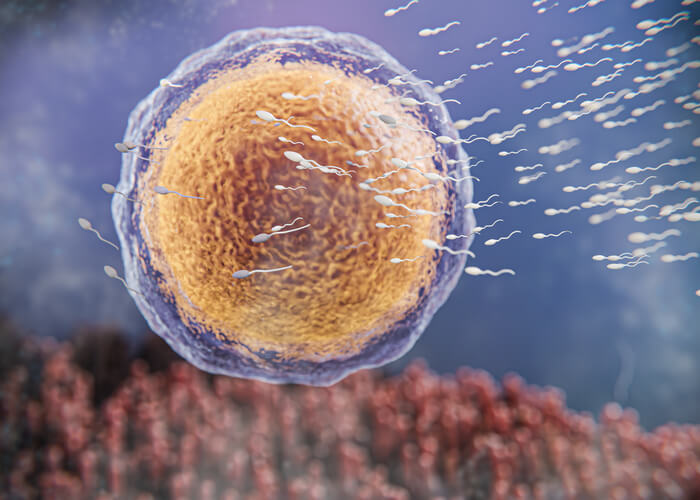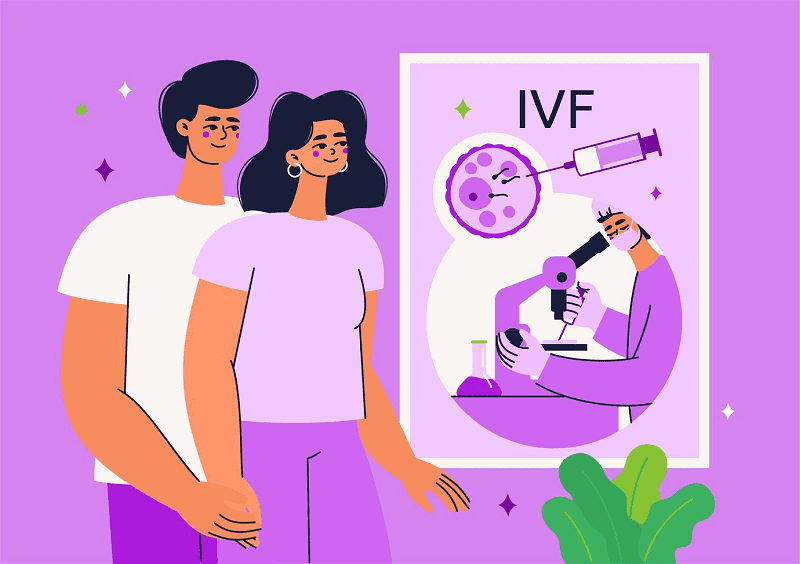Azoospermia, often referred to as zero sperm count, is a condition characterized by the absence of sperm in semen. It is a significant factor contributing to male infertility, affecting approximately 1% of the male population. Understanding the causes, symptoms, and available treatment options for azoospermia is crucial for individuals and couples navigating fertility challenges.
In this comprehensive guide, we aim to help you understand what is azoospermia, also find out different types of azoospermia, explore its root causes, discuss prevalent symptoms, explain the diagnostic approaches, and provide a comprehensive overview of available medical treatments.
What is Azoospermia (No Sperm Count)? And How Common is it?
Azoospermia is a relatively rare condition, affecting approximately 1% of the male population. However, it is a leading cause of male infertility. Understanding its prevalence is vital for couples trying to conceive a child.
Types of Azoospermia
Azoospermia can be categorized into three primary types based on its origin. Let’s now study them all for a better understanding as a couple.
1. Pre-testicular Azoospermia
Pre-testicular azoospermia occurs when there is a disruption in the hormonal regulation of sperm production with zero sperm count or very little sperm count. Some common factors contributing to this condition are hormonal imbalances, specific medications, systemic illnesses, or problems related to the hypothalamus or pituitary gland.
2. Testicular Azoospermia
Testicular azoospermia arises from problems within the testicles themselves, leading to impaired sperm production. It can be caused by genetic factors, infections, chemotherapy, radiation therapy, or other conditions that damage the testicles.
3. Post-testicular Azoospermia
Post-testicular azoospermia is characterized by blockages or obstructions that prevent sperm from reaching the semen making it a zero sperm count or very less one. Causes include vasectomy, ejaculatory duct obstruction, or congenital anomalies in the reproductive tract.
What are the Causes of Azoospermia?

Now that you know, What is Azoospermia, let’s try to understand the root causes of low sperm count is crucial for effective diagnosis and treatment. Azoospermia can be broadly classified into two categories: –
1. Obstructive Azoospermia
Obstructive azoospermia occurs when there is a physical blockage that prevents sperm from being ejaculated making it a zero sperm count. Common causes include vasectomy, congenital absence of the vas deferens, or scarring due to infections or surgery.
2. Non-obstructive Azoospermia
Non-obstructive azoospermia results from issues with sperm production itself. It can be caused by genetic factors, hormonal imbalances, exposure to toxins, or underlying medical conditions that affect the testicles’ ability to produce sperm.
Symptoms of Azoospermia
Azoospermia often presents without noticeable symptoms. Men with this condition may not experience any physical discomfort or changes in sexual function. The absence of sperm in ejaculation is typically the first indication of azoospermia.
Diagnosis of Azoospermia
After understanding the causes and types of azoospermia, we must now move to diagnosing azoospermia involving a comprehensive evaluation by a medical professional. The following steps are typically involved:

1. Medical History and Physical Examination
A detailed medical history and physical examination can provide valuable insights into potential underlying causes of low sperm production, such as previous surgeries, infections, or exposure to toxins.
2. Semen Analysis
The cornerstone of diagnosis involves analyzing a semen sample. A complete absence of sperm or zero sperm count in the semen confirms the diagnosis of azoospermia.
Must Read: How to Read a Sperm Analysis Report
3. Hormone Testing
Hormone levels, particularly those related to reproductive function (e.g., FSH, LH, testosterone), are assessed to determine if hormonal imbalances are contributing to the condition.
4. Genetic Testing
In cases of non-obstructive azoospermia, genetic testing may be recommended to identify any genetic factors that could be causing the condition.
5. Imaging Studies
Imaging tests such as scrotal ultrasound may be used to visualize the testicles and identify any structural abnormalities.
Medical Treatments for Azoospermia
The appropriate azoospermia treatment depends on its type and underlying causes. Here are some potential medical treatments:
1. Hormone Therapy
For cases of pre-testicular azoospermia, hormone therapy may be prescribed as azoospermia treatment to correct hormonal imbalances and stimulate sperm production. This treatment aims to address the root cause and encourage the testicles to produce sperm.
2. Surgical Interventions
Obstructive azoospermia often requires surgical procedures to remove blockages or reconstruct the reproductive tract. These procedures of azoospermia treatment can include vasectomy reversal or epididymal sperm aspiration (TESA/PESA). Surgical options are particularly effective for men with blockages that prevent sperm from reaching the semen.
3. Assisted Reproductive Techniques (ART)
In cases where sperm production is severely impaired, ART methods such as in vitro fertilization (IVF) with intracytoplasmic sperm injection (ICSI) can be used to retrieve and fertilize sperm outside the body. This azoospermia treatment approach is beneficial when there are limited viable sperm available for fertilization.

4. Genetic Counselling
For individuals with genetic causes of azoospermia, genetic counseling can provide insights into the likelihood of passing on these genetic conditions to offspring and explore options such as sperm donation or adoption. Genetic counseling helps couples make informed decisions about their family planning options.
Summarising it all…
What is azoospermia? Azoospermia, or zero sperm count, is a multifaceted condition that can significantly impact a man’s fertility. Understanding its prevalence, types, causes, symptoms, and diagnostic methods is crucial for individuals and couples facing this challenge. Fortunately, medical science and technology advancements offer various treatment options, providing hope for those seeking to overcome azoospermia-related infertility.
Lastly, Azoospermia can lead to significant emotional distress for affected individuals and couples. Feelings of inadequacy, grief, and anxiety are common. Seeking psychological support and counseling in a reputed fertility clinic is crucial to addressing these emotional challenges and navigating the complex journey of infertility with resilience and understanding.
FAQs:
Q. Can I get pregnant with Azoospermia?
While azoospermia makes natural conception challenging, there are options available for couples to achieve pregnancy. Assisted reproductive azoospermia treatments such as IVF with ICSI can help by using retrieved sperm for fertilization. Additionally, sperm donation is another viable option for couples facing severe azoospermia.
Q. How can Azoospermia be prevented?
Preventing azoospermia often involves addressing underlying risk factors. One can prevent the same by maintaining a healthy lifestyle with a balanced diet, regular exercise, and stress management to support overall reproductive health. You also need to practice safe sex to prevent sexually transmitted infections. Plus, avoid exposure to environmental toxins and excessive heat that may harm sperm production. Lastly, if planning to undergo a vasectomy, ensure that it is reversible or consider sperm banking for future fertility preservation.




